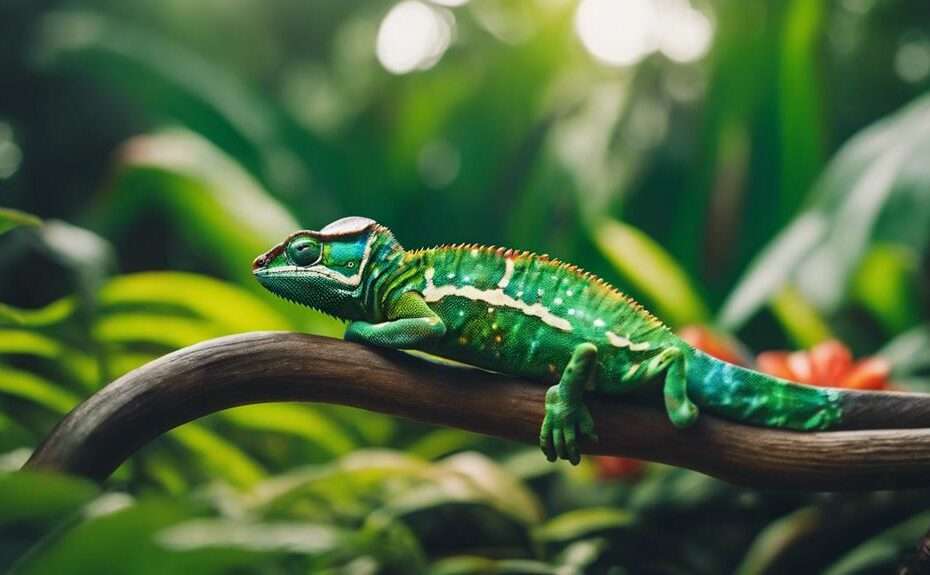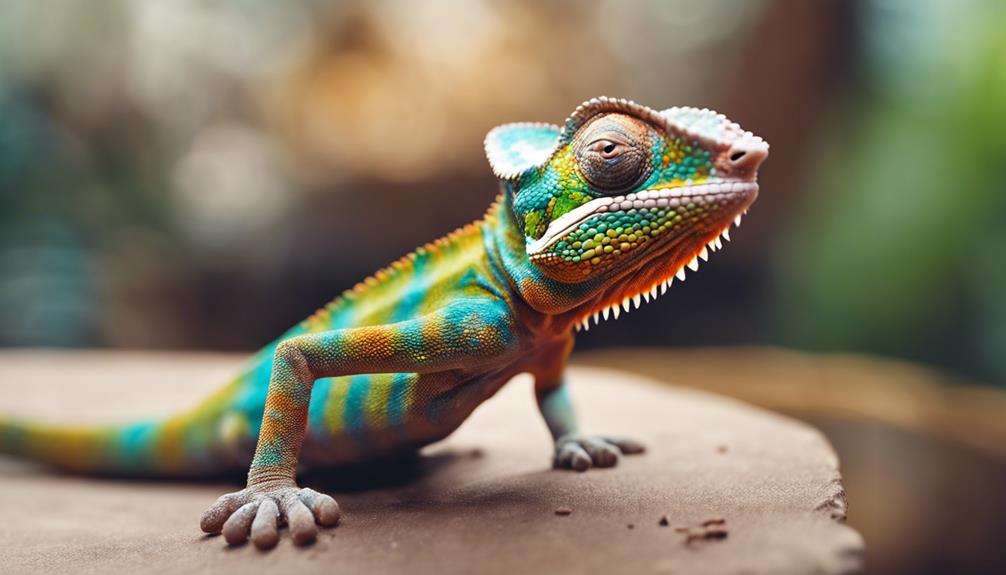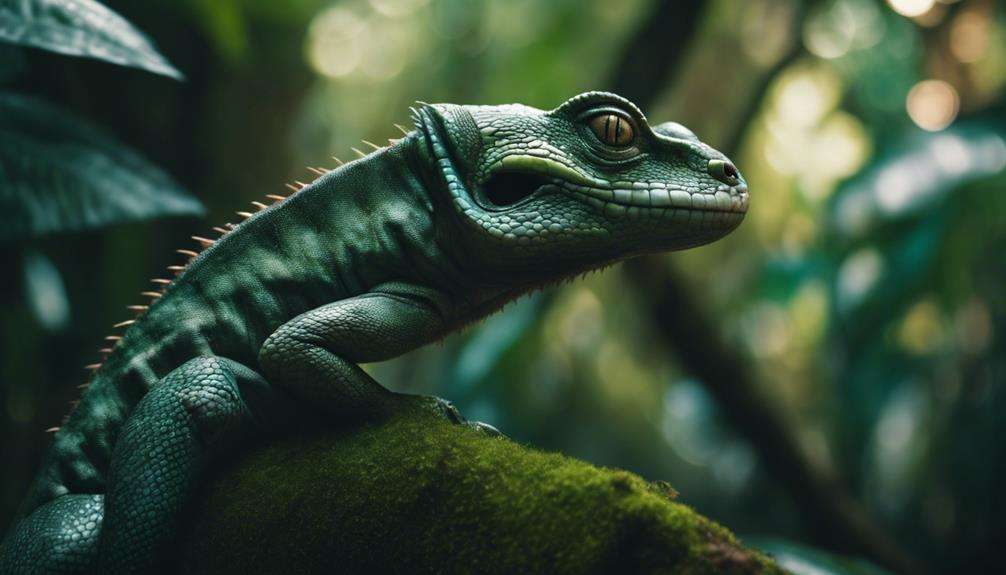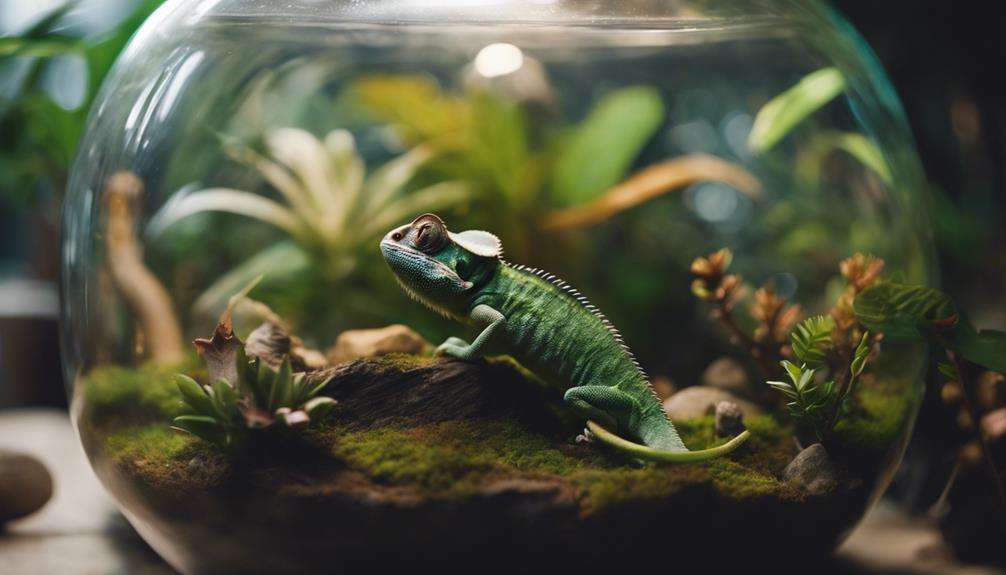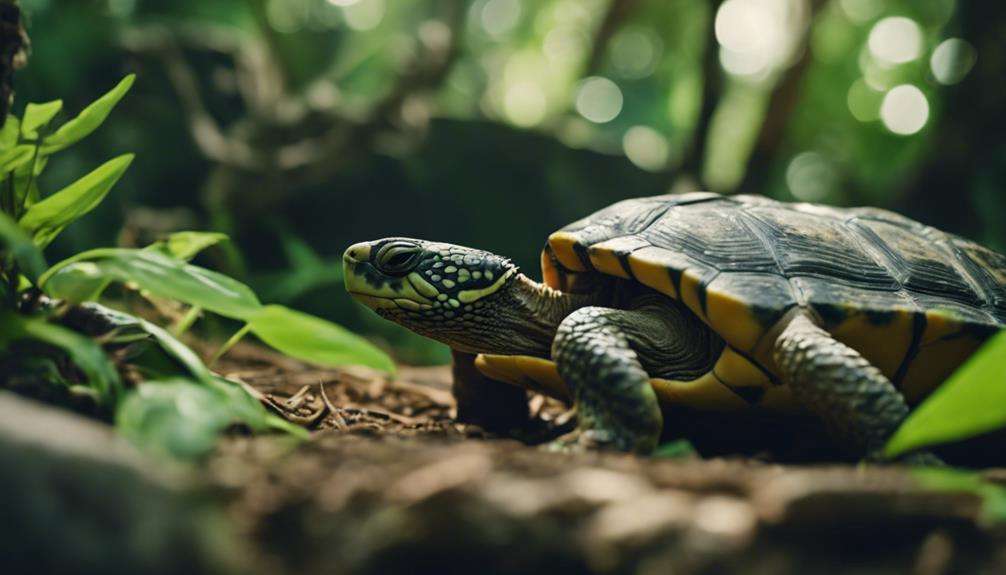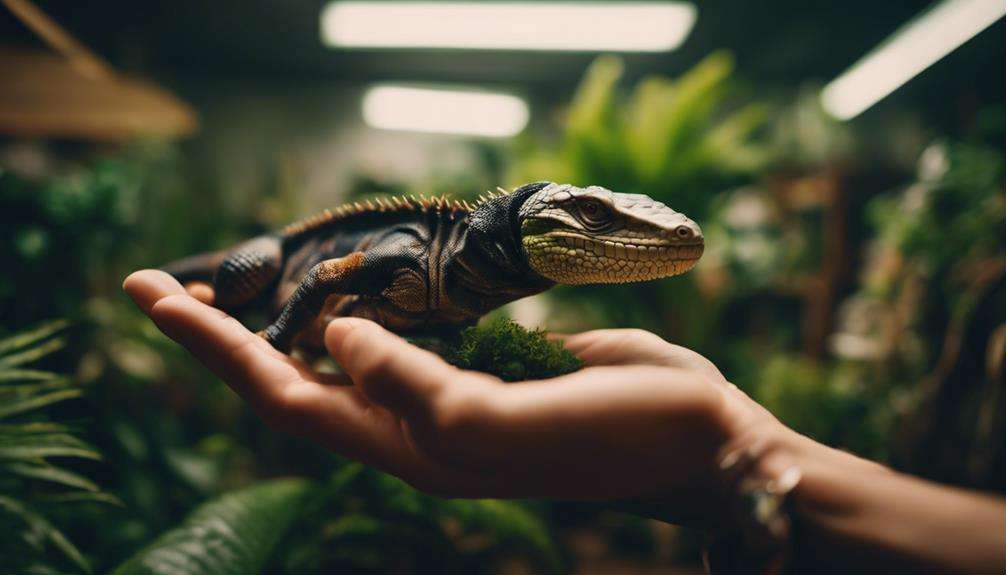Imagine embarking on a journey through the hidden realms of the reptilian world, where each creature is a rare gem waiting to be discovered. As you uncover the secrets of the African Pancake Tortoise and the Brazilian Rainbow Boa, you'll realize that there are even more enigmatic species lurking in the shadows, waiting to be unveiled.
From the mysterious Madagascar Leaf-nosed Snake to the captivating Australian Frilled Lizard, the allure of these exotic reptiles is undeniable. Their stories are yet to be fully told, offering a glimpse into a world where rarity and wonder collide.
Key Takeaways
- Unique reptiles like the African Pancake Tortoise and Brazilian Rainbow Boa showcase rare adaptations and beauty.
- Conservation efforts are critical for species like the Madagascar Leaf-nosed Snake facing habitat threats.
- Popular in the pet trade, species like the Australian Frilled Lizard require specific care and setups.
- Some exotic reptiles, such as the Asian Water Monitor, face population declines due to hunting pressures.
African Pancake Tortoise
The African Pancake Tortoise, a marvel of adaptation in East Africa, boasts a distinctive flattened shell that allows it to expertly navigate rocky terrains. This rare species, sought after in the pet trade for its unique appearance, faces a vulnerable status in the wild due to habitat loss and collection pressures. The flattened carapace of the African Pancake Tortoise sets it apart from other tortoise species, enabling it to squeeze into narrow crevices in rocky landscapes where it finds refuge from predators and harsh weather conditions.
In the pet trade market, these tortoises are highly prized for their striking looks and unusual shell structure. However, their popularity has led to increased demand, putting additional strain on wild populations already facing threats from habitat destruction. Legal protections are in place in many countries to safeguard the African Pancake Tortoise from overexploitation, highlighting the importance of conservation efforts to ensure the survival of this fascinating species in its natural habitat.
Brazilian Rainbow Boa
With its vibrant iridescence and striking rainbow-like sheen, the Brazilian Rainbow Boa captivates onlookers with its stunning appearance. This constrictor species, scientifically known as Epicrates cenchria cenchria, hails from the lush rainforests of Brazil, Guyana, Suriname, and French Guiana.
Here are five intriguing facts about the Brazilian Rainbow Boa:
- The Brazilian Rainbow Boa is a constrictor, relying on its muscular body to suffocate prey like small mammals, birds, and reptiles.
- Its iridescence is truly mesmerizing, stemming from microscopic ridges on its scales that refract light, creating a prism effect reminiscent of a rainbow.
- These boas thrive in humid and tropical environments, utilizing their surroundings to blend in while hunting.
- In the exotic pet trade, they're highly sought after due to their vivid colors, placid temperament, and manageable size compared to other boa species.
- Observing a Brazilian Rainbow Boa in its natural habitat is a unique experience, where its iridescent beauty truly shines under the dappled sunlight of the rainforest canopy.
Madagascar Leaf-nosed Snake
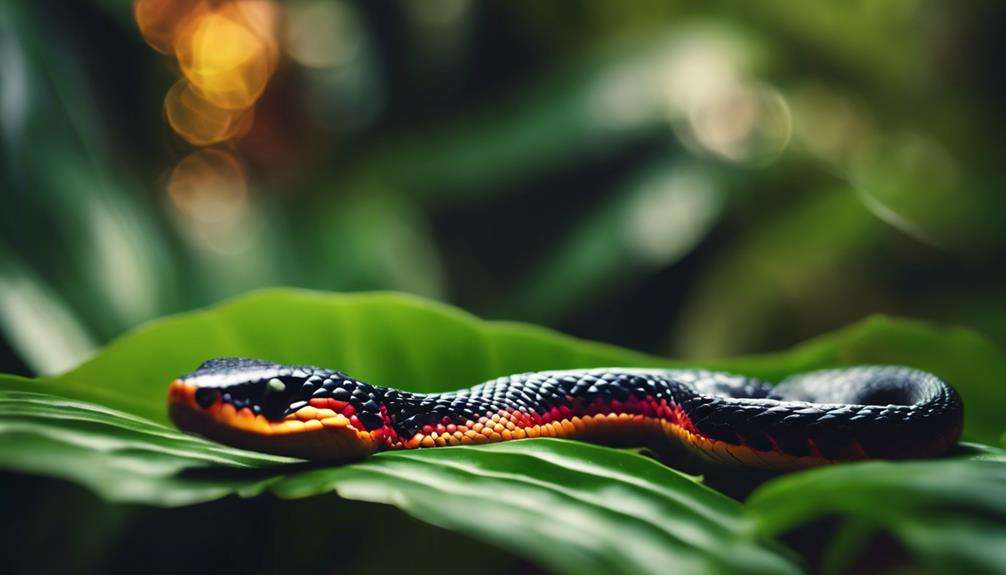
Emerging from the verdant canopies of Madagascar, the Leaf-nosed Snake showcases its unique adaptation for camouflage with its distinctive leaf-like nose. These Madagascar Leaf-nosed Snakes are perfectly suited for their arboreal lifestyle, blending seamlessly with the lush vegetation where they reside. Their specialized hunting techniques involve stalking small mammals and birds from the treetops, relying on stealth and ambush to secure their prey.
Although sought after for their striking appearance, Madagascar Leaf-nosed Snakes have limited availability in the pet trade. This is primarily due to their specific care requirements and unusual feeding habits, which can be challenging for novice reptile enthusiasts to manage. Experienced keepers are necessary to provide the proper environment and diet to ensure the well-being of these unique snakes in captivity.
Conservation efforts play a crucial role in protecting Madagascar Leaf-nosed Snakes, as habitat destruction and illegal collection pose significant threats to their survival. Preserving the delicate balance of their ecosystem is essential to safeguarding these rare and remarkable reptiles for future generations.
Australian Frilled Lizard
Widely recognized for its distinctive frill, the Australian Frilled Lizard showcases remarkable defensive displays in its natural habitat of northern Australia and southern New Guinea. When encountering this unique reptile, you may notice the following fascinating characteristics:
- Frill Display: The frilled lizard extends its frill around its neck to intimidate predators or attract mates, creating a striking visual display.
- Arboreal Lifestyle: These lizards are skilled climbers, spending much of their time in trees where they use their frill for protection and communication.
- Insectivorous Diet: Feeding primarily on insects like crickets, spiders, and small vertebrates, the Australian Frilled Lizard plays a vital role in its ecosystem.
- Popular Pet Choice: Due to their captivating appearance and intriguing behavior, these lizards are sought after in the pet trade, requiring specific care and habitat setups.
- Thermoregulation Needs: To thrive, Australian Frilled Lizards need spacious enclosures with climbing structures and basking spots to regulate their body temperature effectively.
Encountering an Australian Frilled Lizard in the wild is a truly unique experience, showcasing the wonders of nature's adaptation and beauty.
Asian Water Monitor
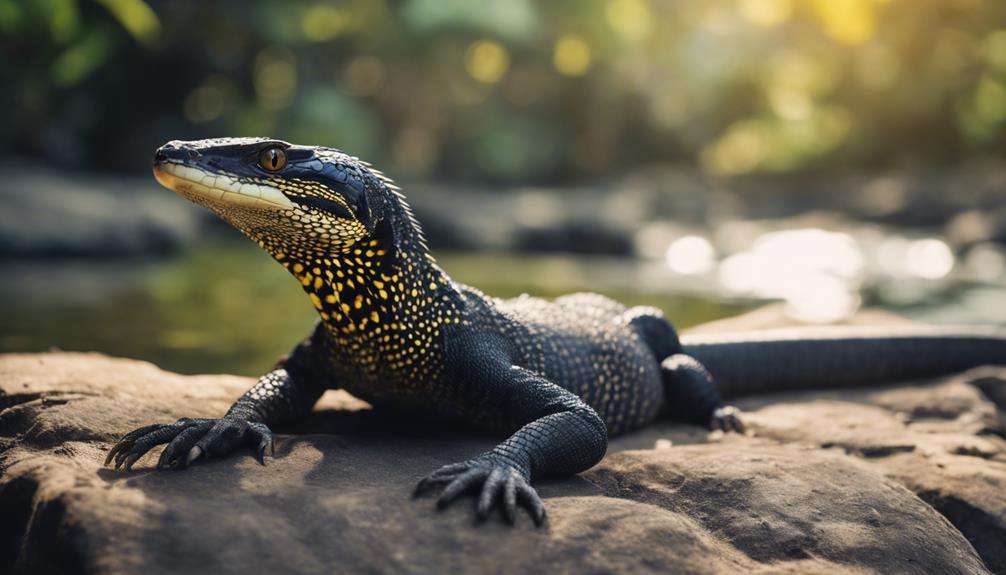
Inhabiting various habitats across South and Southeast Asia, the Asian Water Monitor is a formidable lizard species known for its impressive size and predatory skills. As one of the largest lizard species globally, these monitors can grow up to 10 feet in length and weigh over 50 pounds. Their native habitats near water sources like rivers, swamps, and mangroves provide them with ample opportunities to showcase their swimming and climbing prowess. With excellent senses of smell and taste, Asian Water Monitors efficiently detect prey such as fish, birds, and small mammals.
Despite their hunting abilities, these monitors are equally recognized for their aggressive behavior when threatened or cornered. When feeling in danger, they resort to using their powerful jaws and sharp teeth for defense. Unfortunately, in some regions, human activities like hunting for meat and leather have led to population declines of the Asian Water Monitor, raising concerns about their long-term survival in certain areas.
Frequently Asked Questions
What Is the Rarest Reptile in the World?
The rarest reptile discoveries highlight the urgent need for conservation efforts. Their unique habitats face threats. Understanding and protecting these species is crucial. Every effort counts in preserving these remarkable creatures for future generations.
What Is the Most Valuable Reptile in the World?
You might be wondering what makes the Ploughshare tortoise the most valuable reptile in the world. Top collectors view them as valuable investments due to their rarity and beauty. Captive breeding programs aid in their conservation.
What Is the #1 Most Endangered Reptile?
Conservation efforts are vital for endangered reptiles facing habitat destruction. Illegal trade exacerbates the decline of reptile populations. The Ploughshare tortoise in Madagascar, critically endangered with only 200 left, requires urgent protection to prevent extinction.
What Is the Most Unique Reptile in the World?
In the world of exotic reptiles, you'll marvel at the Earless Monitor from Borneo. Its unusual colors, strange behaviors, and exotic habitats make it a standout. With dragon-like features and no external ears, it's truly unique.
Conclusion
As you gaze upon these rare and fascinating reptiles, you can't help but feel a sense of awe and wonder at the diversity of life on our planet.
The intricate patterns of the Brazilian Rainbow Boa, the graceful movements of the African Pancake Tortoise, and the mysterious allure of the Madagascar Leaf-nosed Snake all leave you yearning for more.
Stay tuned for future discoveries and conservation efforts to protect these extraordinary creatures for generations to come.
